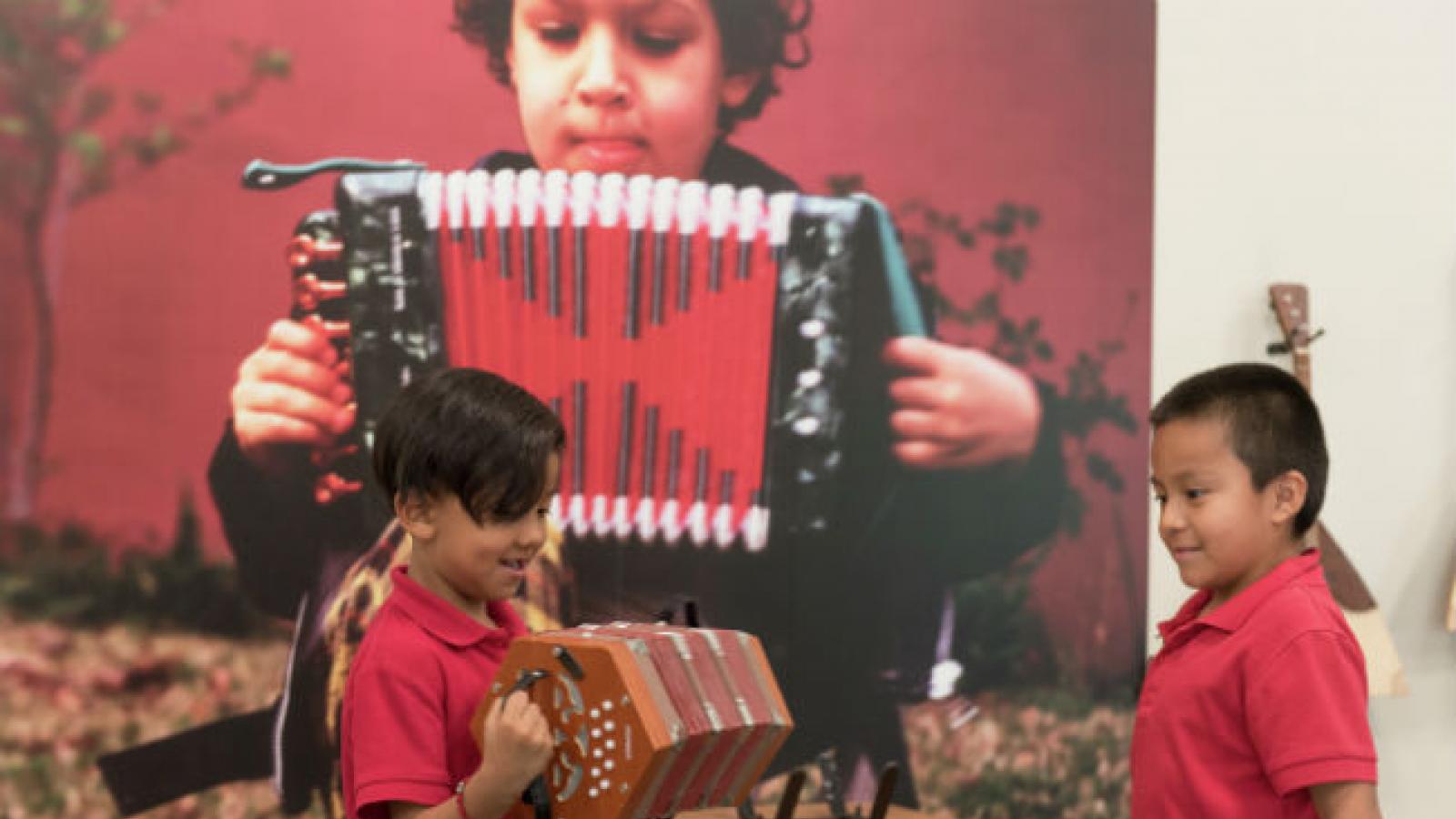Spotlight on the Musical Instrument Museum

On any given day, there are over 17,500 foster children living in Arizona, according to the nonprofit organization Arizonans for Children. This means 17,500 children struggling with familial separation, adjusting to a new living situation, and often, coping with the effects of abuse or neglect.
To help counteract this dislocation and trauma, the Musical Instrument Museum (MIM) in Phoenix is launching its pilot year of the Parhelion Project, which received one of 1,074 newly announced NEA grants. The interactive museum, a Smithsonian affiliate, opened in 2010 with a multicultural focus, and features instruments and performances that highlight the universal presence of music across the globe.
Although MIM works with 70,000 children every year, including those in foster care, the museum was looking to expand the impact of its youth workshops and performances. “We're trying to take the seeds of those programs and grow them into something bigger,” said Patrick Murphy, MIM’s theater manager. “We were looking to create something a little bit more immersive—a day that could be a bonding type of experience [for children and their foster families].”
This experience will entail a daylong event for children and families that includes an interactive workshop, a performance, an opportunity to explore the museum’s display of 6,600 instruments from around the world, and a concluding group discussion. A collaboration with Free Arts of Arizona, an organization that works with abused and neglected children, the Parhelion Project is expected to serve 100 foster children in 2018.
The combination of musical and museum experiences would carry multiple benefits for participants. Numerous studies have shown that listening to and performing music can promote a sense of well-being, Murphy said, which can be critical for a foster child who has lacked stability or experienced trauma. “Music reduces stress amongst individuals, and scientifically it's been shown to reduce cortisol levels, which are the stress hormones,” Murphy said. Music can also improve interpersonal skills, and if playing an instrument, improve motor development, said Murphy. “All these things combined with the simple aesthetic enjoyment of music help lead to healing, help lead to self-awareness, and help improve the sense of self.” Museum visits can be equally beneficial for children, and have been shown to stimulate the imagination and creativity, offer exposure to new subject matter, and provide memorable learning experiences.
Because many foster children in Arizona come from immigrant families, Murphy hopes that another aspect of the Parhelion Project will help children celebrate their roots, and discover new reasons to take pride in who they are and where they’re from. MIM’s collection is divided into five geographic galleries and instruments hail from every country in the world, enabling any child to find a personal cultural reflection on display. “One of the things that we are trying to encourage the children and their families to do is explore the music of where they come from—discover the different instruments, the different musical sounds, the different musical styles, and to see the goodness that is there,” he said. “We want children to go up into the galleries and explore the world, and try to find their place in the world through music.”
Of course, a major component of the Parhelion Project is also to simply host a day where kids can just be kids. The museum is highly interactive, and children are encouraged to explore and engage their senses through touch, sight, and sound. “It's very easy to have very big, grand ideas, but at the absolute most basic, I want people to have an incredible experience,” said Murphy. “Ultimately, when we think of the grander picture, we're hoping that children will come through and feel welcomed, feel like they're in a friendly place, feel like they're in a place where they can grow, where they can learn, a place that encourages them to discover themselves, discover who they are, and in turn, offer their foster families a chance to discover who these incredible children are.”




